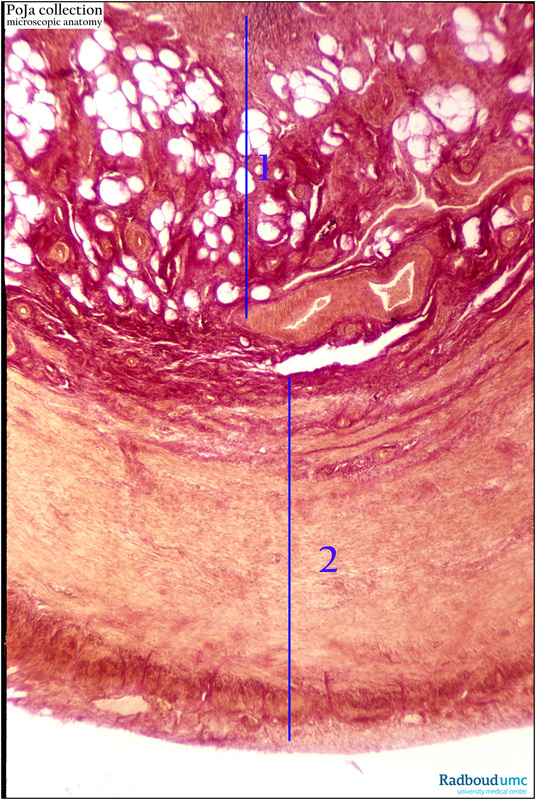

The patient had no specific symptoms and CBC performed at the admission was within the normal range. Gynecologic magnetic resonance imaging was performed 3 weeks prior to the admission and CT was not obtained during admission. The surgeon noted during the operation that the appendix was edematous, and an incidental appendectomy was performed. The pathological diagnosis of the ovarian lesions was benign cysts (right rete cyst and left paratubal cyst), and the secondary diagnosis was fibrous obliteration of the appendix. The CT scans that were obtained one year prior to the surgery showed a thick appendiceal wall with periappendiceal infiltration, which is suggestive of appendicitis. There were enhancing core structures in the dilated lumen that is similar to the above case ( Fig. The CT was performed to evaluate the ovarian cysts, and CBC was not performed because the patient had no specific abdominal pain at the time. Several studies have reported that the fibrous obliteration of the appendix can mimic an acute appendicitis. ( 8), one case of fibrous obliteration was noted on the retrospective CT, from the pathological review of 650 adult patients presenting to the emergency department with acute lower abdominal pain. In contrast, the CT from Case 1 of our study revealed a normal appendix, and there were no findings to explain the pain in the right lower quadrant (RLQ). ( 9) reported one case of fibrous obliteration, among 753 patients, where the patient was suspected of appendicitis and underwent CT for diagnostic evaluation. ( 10) reported 10 cases of chronic inflammatory appendiceal conditions, including one case of fibrous obliteration, which mimicked acute appendicitis on CT this was among 106 patients who underwent surgery within 7 days after performing a CT scan.Įxamining the condition based on CT scans was unreliable in this case, because it would lead to the diagnosis of an acute appendicitis. Fibrous obliteration in a 36-year-old female with RLQ pain presented with a distended appendix (9 mm) with periappendiceal infiltration and mass effect on the cecum.The aim of this study is to emphasize the importance of rare histopathological findings in appendix specimens of pediatric patients who underwent surgery for the preliminary (underwent appendectomy to treat an initial diagnosis) diagnosis of acute appendicitis. In this study, the demographic and histopathologic data of 1683 patients who underwent surgery for (presumed acute appendicitis) acute appendicitis between 20 were retrospectively evaluated. Appendectomy specimens were classified microscopically as appendix vermiformis, lymphoid hyperplasia, acute appendicitis, phlegmonous appendicitis, gangrenous appendicitis, perforated appendicitis, and unusual histopathological findings. Age, sex, clinical features, surgical reports, and macroscopic and microscopic features of appendix vermiformis were evaluated in patients with unusual histopathological findings. Ages of these 1683 patients ranged between 6 months and 17 years among them, 1091 were men and 592 were women. Pathology reports included acute appendicitis ( n = 827), phlegmonous appendicitis ( n = 300), lymphoid hyperplasia ( n = 274), perforated appendicitis ( n = 181), appendix vermiformis ( n = 50), gangrenous appendicitis ( n = 3), and abnormal findings ( n = 48). Of the 48 patients who were detected to have unusual findings, 32 were women and 16 were men and their ages ranged from 6 to 17 years.


 0 kommentar(er)
0 kommentar(er)
